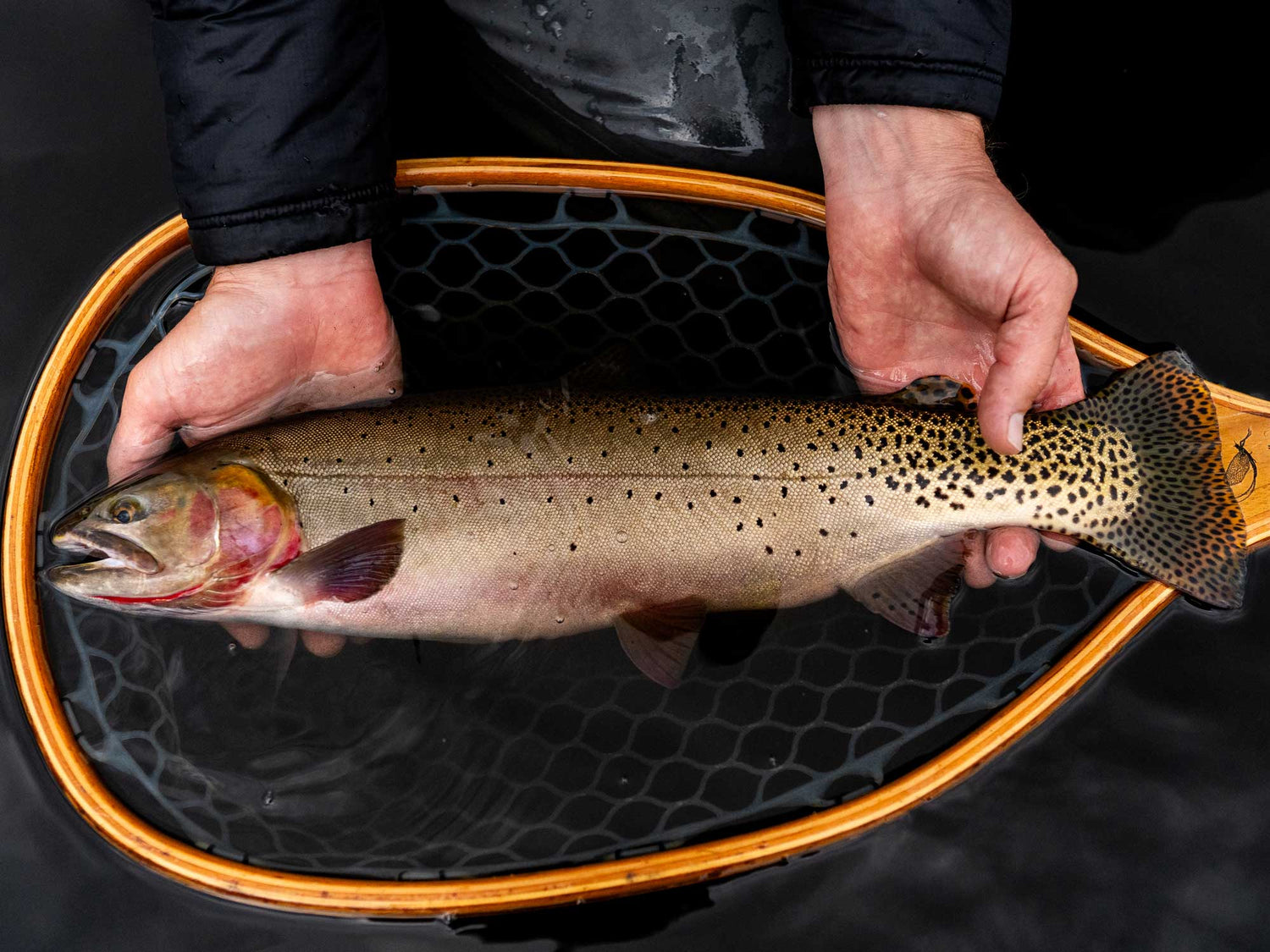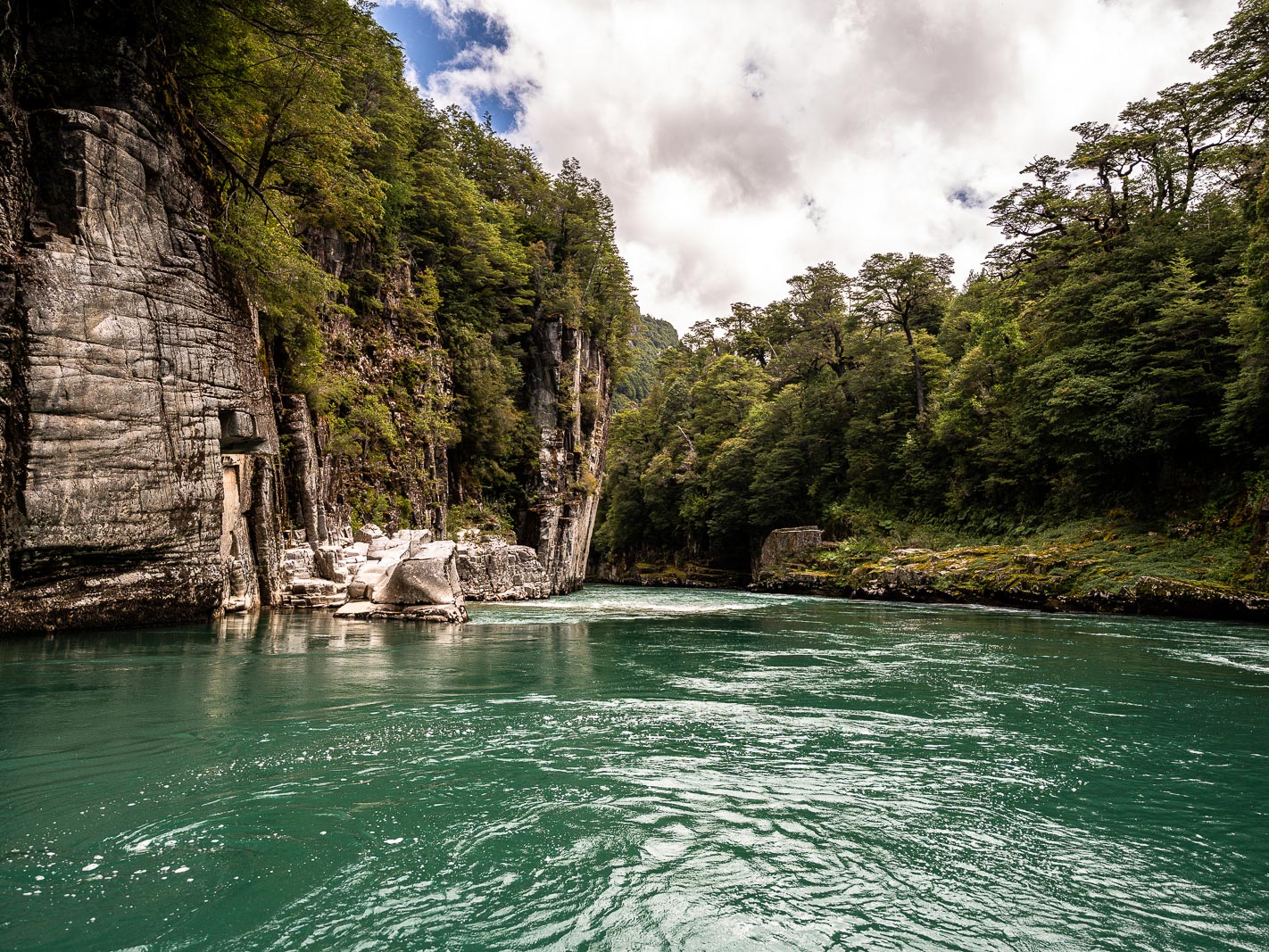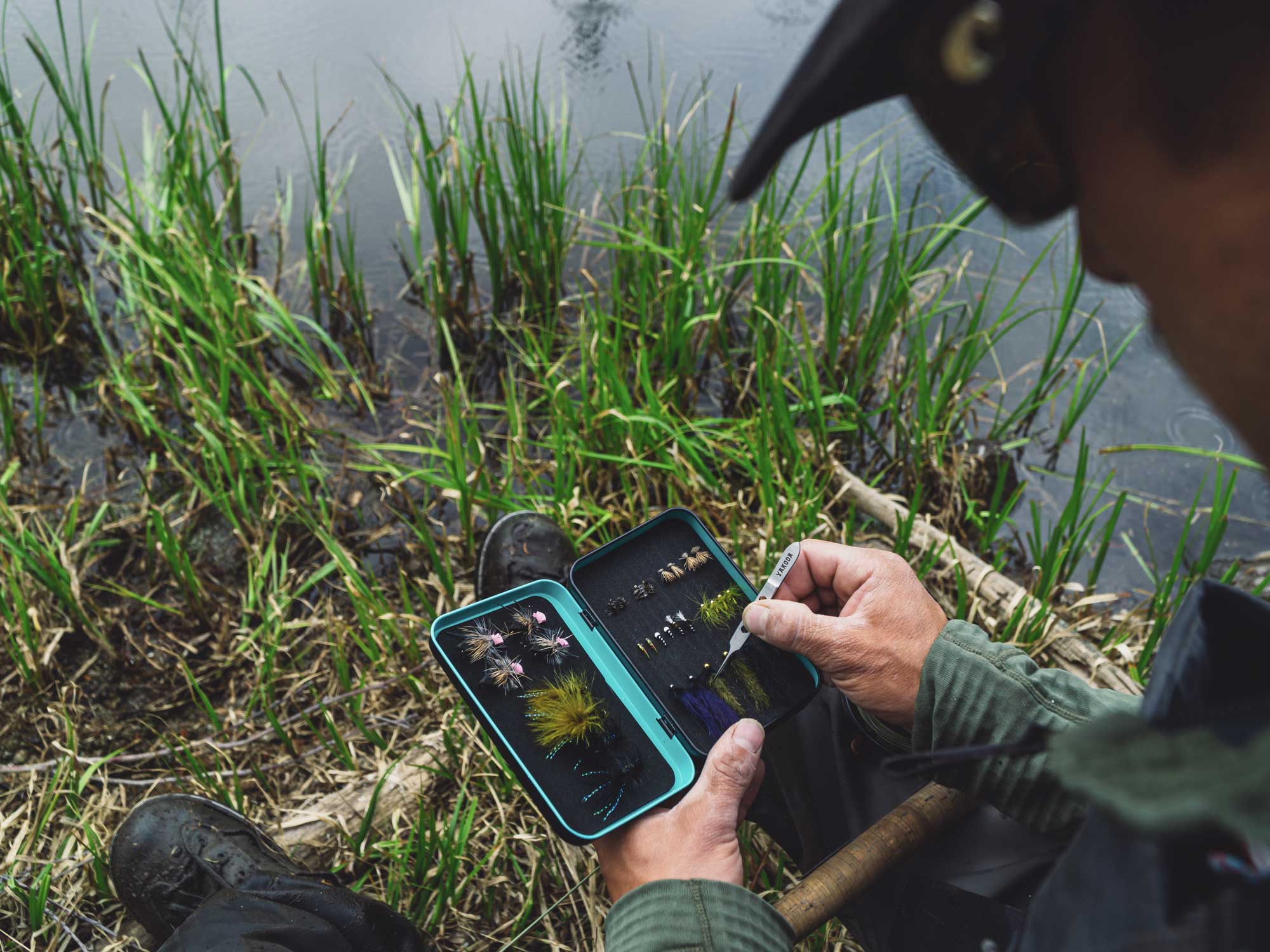With a firm grasp on the Stillwater fundamentals detailed in Part 1 and Part 2 of our Stillwater 101 posts, we hope you’ve been putting in the miles to practice your new skillset.
At its core, fly fishing is all about repetition. From perfecting your overhand cast to learning how to roll cast, then mastering dry fly presentation, it all comes down to spending a lot of time on the water to hone your skills. The same is true for stillwater fishing, as the elements and surroundings can often be unpredictable. Being able to rollcast with your back up against a scree field, rockwall, or dense foliage might be your only casting option to target moving cutthroat. In other situations, you might be getting hammered by the wind or a rogue summer storm might pass through. Each of these variables require you to have a versatile skillset, while also recognizing when to sit down, take a break, and let a storm pass by.
Be Prepared
High alpine lakes in the Rockies can be one of the most unpredictable places to fish in the country. With jagged peaks and moving winds, it’s impossible to predict what the weather will be like and your best bet is to be prepared for sun, wind, rain, and even snow, regardless of the time of year. Packing the essentials in your backpack is often the difference maker between having a good day up in the mountains vs. having a bad—or even dangerous—experience. Here’s a quick list of things you should ALWAYS have in your backpack:
- Rain Jacket
- Lightweight down jacket
- Sun hoodie
- Gloves
- Sun screen
- Water filtration device or a way to purify water
- Food and snacks
- A lightweight setup, like the Utility Pack, that includes forceps, fly boxes, tippet, a couple extra leaders, indicators, weights, your fishing license, a small tube of floatant, and some nippers
- A mid-length handle landing net
- Optional: boots and waders
Managing the amount of weight you carry is often the difference between being energized when you arrive at your destination or being tired from packing too much. With more time on the trail, you’ll learn to fine-tune the things that you bring with you. Stillwater excursions are often an exercise in minimalism, forcing you to be very conscious of what you pack until you find the sweet spot that works for you.

Safety First
Let’s circle back to unpredictable mountain weather. In Stillwater 101, we touched on being aware of your surroundings and this is essential for a safe day up in the mountains. Weather moves very quickly at higher altitudes and it’s important to recognize when it’s time to stop fishing and seek shelter. The good news is that storms typically move very quickly through an area and we often use a passing storm to hunker down in the trees to eat lunch, talk about what’s working and what’s not, and to hydrate. In most cases, you’ll likely need to only take a 15-30 minute break but if there is loud thunder and lightning nearby, we suggest you be a bit more cautious and wait things out just a little bit longer to make sure the storm cell has completely passed before getting back on the water.
Ok, back to fishing…
Trout are creatures of habit. You’ll often see the same fish moving through an area repeatedly and this a good opportunity to test out files you think they’ll like—surprisingly, they’ll often eat the same flies repeatedly once you figure things out.
The same flies should be in the rotation on your nymphing rig when you’re focused on figuring out what’s working in deep water—a chironomid up top with one or two leeches below it. Same is true if you’re fishing a lakes edge or the shallow water before the dropoff. Like everything, it just takes time and a fair amount of experimentation for you to dial in your setup. The best thing we can relay is that the same flies typically work from one lake to the next so trust your instincts and have confidence in the flies you’re fishing.
Movement
We can all be stubborn from time to time but when you're at a lake, the worst thing you can do is to get stuck tossing flies in the same spot. It’s important to move around and try new flies, as you’ll increase your chances of seeing and catching more fish. The same goes for when you're nymphing or fishing a dry dropper. The difference between a good day or a slow day at a lake is often the movement of your flies while you cover as much water as possible.
People that fish stillwater enough learn about “the twitch” and use it like a weapon. It’s just a subtle side-to-side wiggle of your rod tip to make the flies twitch like a living bug would do. This helps imitate the emergence of the chironomid and the pulsing swimming motion of the leech. The wind can be your friend, moving the flies for you and cutting down on the artificial movement you might otherwise need to to make your flies appear lifelike.
The Reward
We’ve all heard it before, you can’t catch fish from your couch. If you’re motivated—to put in the work, research, and miles—the rewards are endless. From incredible days spent outside making memories with your buddies to that gorgeous cutthroat that you’ll manage to wrangle into your net—the true reward is a day well lived. Being outside affords us all a chance to get away from the noise that our lives have become. Fishing for trout that inhabit high country lakes recharges the soul—take it in, breathe in the air, and maybe catch a fish. As we get older, the gift of fishing encompasses so much more than actually fishing. Want to find out what the rewards are? Pick out a lake with at least a 5 mile hike and let us know how it goes.



